Kailash Mansarovar Yatra is a journey to the world’s greatest pilgrimage, where Lord Shiva is believed to have stayed with his consort Parvati. However, the religious values of diverse groups are different. The ultimate pilgrimage tour to Mount Kailash is highly revered among Hindus, Buddhists, Jains, and Bon. The yatra to Kailash Mansarovar liberates humans from their sins and can bring salvation and Moksha according to some popular beliefs. The Kora, circumambulation of Mount Kailash, is believed to bring nirvana and Moksha ending the cycle of birth and rebirth.
Thousands of pilgrims undertake the sacred kora each year, a 52 kilometer walk round the sacred mountain, Kailash, which is believed to cleanse one of sins and bring spiritual merit. Despite its worldwide reverence, the actual summit of the mountain is one of those places that no climber has ever claimed to have set foot upon, thus preserving its sanctity in the eyes of millions.
Though the yatra lasts a few months only, the glory of Mount Kailash keeps alive the wonderful pilgrimage in the autonomous region of China, Tibet. Getting to this greatest pilgrimage is not only a journey of religious values but also a journey of a life-changing experience. It is an adventurous journey that facilitates devotees with the mind-blowing sceneries of the Himalayas, the cultural values of Tibetans and their lifestyle, the mysterious beauty of Mount Kailash, and ultimately a spiritual experience that holds a huge religious and divine significance.
Listen to our Podcast: What is Kailash Mansarovar Yatra?
Kailash Mansarovar Yatra Facts
Here are some facts related to the Kailash Mansarovar Yatra:
|
Journey |
Kailash Mansarovar Yatra |
|
Trip Duration |
Minimum: 10 Days Maximum: 17 Days |
|
Major Attractions |
Mount Kailash (6638 m) Lake Mansarovar (4600 m) Kyirong Town (2850 m) Yama Dwar (4750 m) |
|
Average Elevation |
4000 m |
|
Maximum Elevation |
5600 m (Dolma la Pass) |
|
Difficulty |
Strenuous |
|
Starting point |
Kathmandu, Nepal |
|
Ending Point |
Kathmandu, Nepal |
Kailash Mansarovar Yatra Significance
Kailash Mansarovar Yatra is of spiritual significance for Hindus, Buddhists, Jains, and adherents of the Bon religion. In Himalayan mythology, Mount Kailash, 6,638 meters tall, appears as Earthly Meru, the spiritual void in the center of the Universe. It is said by the Hindus to dwell Lord Shiva and Parvati. The pilgrimage is said to wash away sins from the soul, provide spiritual benefit, and liberate one from the cycle of rebirth.
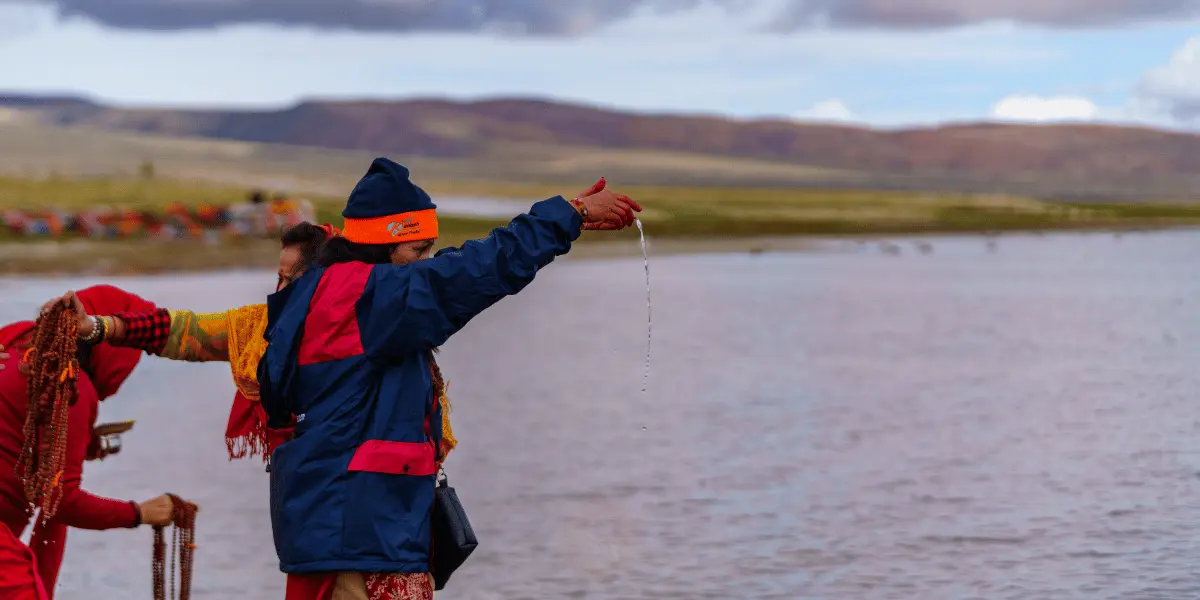
Mansarovar Lake, sitting elegantly near Mount Kailash, is equally sacred. According to Hindu mythology, it was created from the mind of Lord Brahma, and it is considered a source of purity. The chilling water of the lake is said to purify the body and soul. For Tibetan Buddhists, the lake is symbolic of spiritual enlightenment, and Mount Kailash is home to Demchok (Chakrasamvara), a deity of supreme bliss. Circling around the mountain (called parikrama or kora), a high-altitude trek, is an act of devotion and penance. The yatra is also sacred to Jains and Bon. Jains believe that their first Tirthankara, Rishabhadeva, was liberated on Mount Kailash, while adherents of Bon consider it as the place of supreme power.
Apart from the region being religiously significant, it also carries a natural value for the pilgrims all round the world. The presence of natural attractions like Mount Kailash, Lake Mansarovar, and the Himalayas surrounding the region and vast landscapes of Tibet has attracted travellers from around the world for centuries. Which is why the yatra is not only a spiritual immersion but also an exploration of one of the most awe-inspiring places on earth.
Major Kailash Yatra Routes
If one is travelling via Nepal, the Kailash Mansarovar Yatra is organized by private tour companies where these routes provide flexibility and a shorter duration to the pilgrims. These are the 3 most common routes via Nepal:
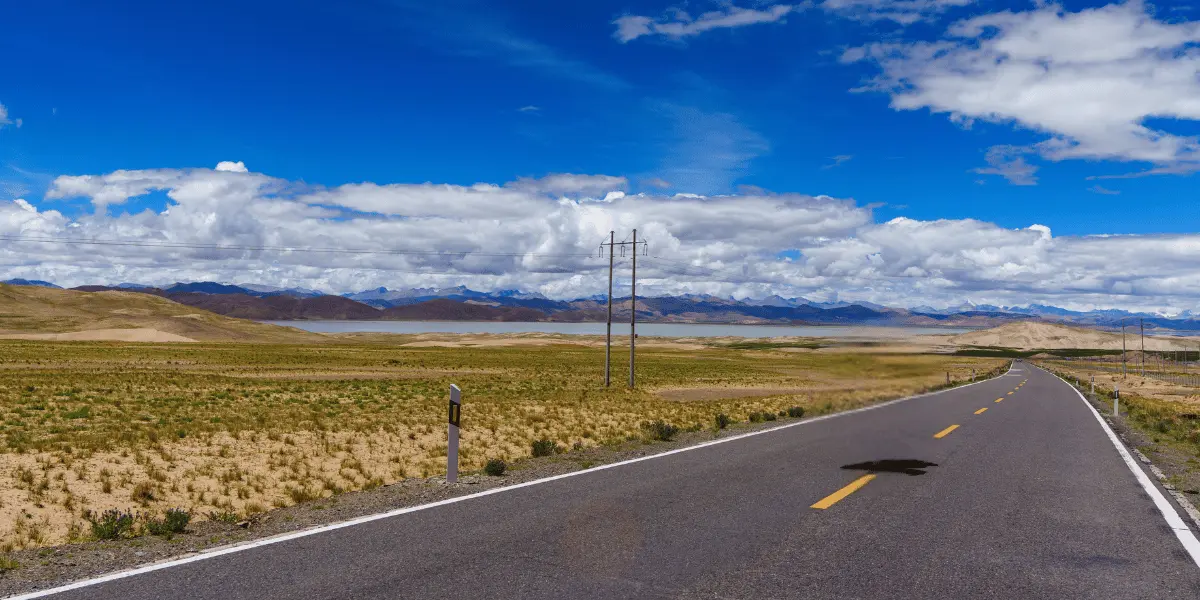
KMY via Kyirong border (Drive)
Route: Kathmandu - Sybrubesi - Kyirong - Kailash Mansarovar
Major Highlights:
- Scenic overland journey through the Himalayas and Langtang region.
- Gradual climb to maintain acclimatization to altitude.
- Cross the Nepal-China border at Kyirong-a quiet and less crowded path.
- Comfortable road trip, especially for those who wish to stay away from flights.
- Drive across magnificent landscapes of the Tibetan plateau.
- Ideal for pilgrims looking for a nice mix of time and comfort.
KMY via Hilsa (Drive+Heli)
Route: Kathmandu - Nepalgunj - Simikot - Hilsa - Taklakot - Kailash Mansarovar
Major Highlights:
- The fastest and shortest way to Mount Kailash (10-14 days)
- Helicopter ride from Simikot to Hilsa would give you beautiful aerial views.
- Heli rides through hills, deep gorges, and majestic Himalayan terrain.
- Perfect for time-constrained pilgrims or for those who just want to avoid trekking.
- Allows access to the remote region of Nepal.
- Fast-paced sliding from lowlands to Tibet's highlands.
KMY via Lhasa (Flight+Drive)
Route: Kathmandu - Lhasa - Shigatse - Tingri - Saga - Kailash Mansarovar
Major Highlights:
- Exploration of Lhasa (Potala Palace, Jokhang Temple), Shigatse, and Saga.
- Culturally and spiritually rewarding experience along the way.
- Gradual acclimatization through the remote landscapes of Tibet.
- Panoramic drive over the high-altitude region and lake of Tibet.
- A glimpse of Tibetan Buddhist culture and architecture.
- For those who wish to explore more leisurely and immersively on their pilgrimage.
Also Read: How to reach Kailash Mansarovar?
Major Attractions
The Kailash Mansarovar region of Tibet, where the sacred Parikrama takes place, offers various attractions for the pilgrims that provide the place with unparalleled beauty and immense significance.
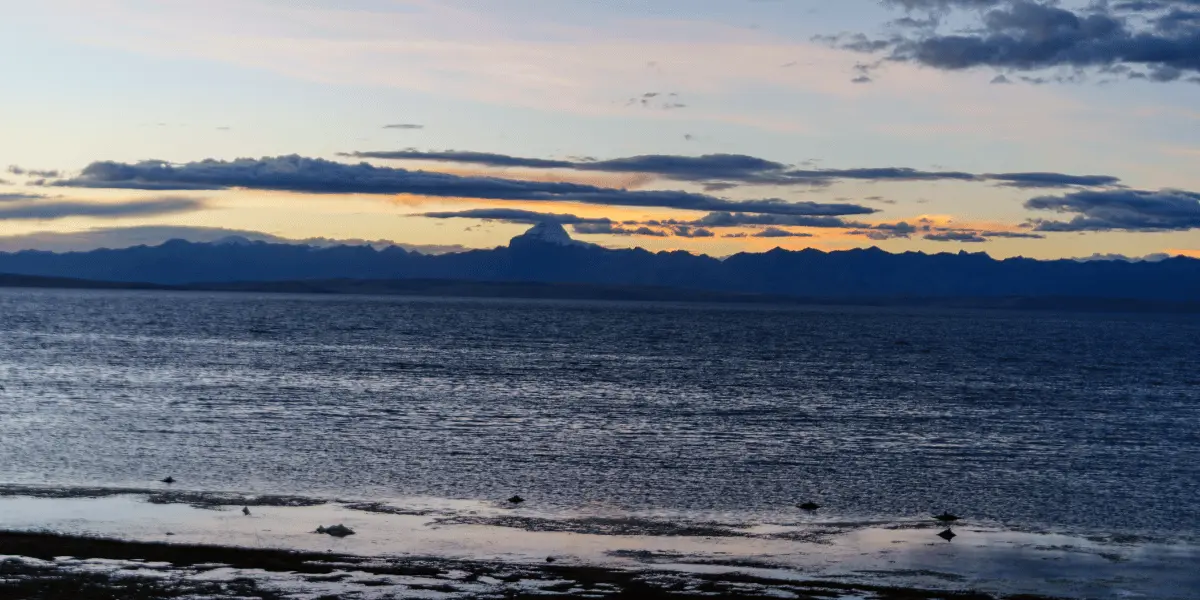
Kailash Parvat
Mount Kailash, set in the far west region of Tibet, is one of the most sacred and mysterious mountains in the world. Sitting 6638 m high, it remains unconquered since climbing it would amount to a great sacrilege given its deep essential numinous facet. Its excellent symmetry coupled with an isolated setting enhances the mystique around it, turning it from a geographical marvel to a spiritual spotlight. Mount Kailash is spiritual to four religions: Hinduism, Buddhism, Jainism, and Bon. Hindus regard it as an abode of Lord Shiva; Buddhists see Demchok, an expression of supreme bliss, residing there. Jains consider it the place of liberation of their first Tirthankara, and Bon followers consider it the seat of all spiritual power.
Lake Mansarovar
Lake Mansarovar, which is about 40 km southwest from Mount Kailash, is one of the highest freshwater lakes at an elevation of 4600 m. The lake, having immense spiritual significance, is believed to have been created from the mind of Lord Brahma. Pilgrims participating in Kailash Mansarovar Yatra stop by this lake to perform various rituals aligning with their religions. It is believed that taking a bath in the water of this lake can cleanse one's soul from their sins.
Yama Dwar
Yama Dwar, also the starting point of the Kailash Parikrama, has great spiritual significance. Hindus believe that to pass through Yam Dwar means shedding worldly attachments and entering spiritual purity, while in the Tibetan Buddhist tradition, it is associated with Demchok, the deity of supreme bliss. It is cautioned among locals to never look back after crossing the gate to avoid attracting misfortune. Other than the rites held annually for raising a prayer-flag pole, the pilgrims participating in the yatra perform various rituals before entering the gate for the yatra. Also, the south face of Mount Kailash can be seen from here.
Gauri Kunda
As pilgrims pass through the highest point, Dolma La Pass, during the Kailash Mansarovar Yatra, the sacred pond Gauri Kunda can be seen beautifully and clearly. At an altitude of about 5608 metre, it is known for its emerald waters and profound spiritual significance. The pilgrims believe this water body to be the site of purification, and hence, they splash water on themselves, especially over their heads, to cleanse their minds, bodies, and speech. However, bathing or drinking water from the pond is not permitted even today to maintain the sacredness of the region.
Chiu Monastery
Chiu Monastery is a highly spiritual site of Tibetan Buddhism located on a rocky hill above Lake Manasarovar in a region of western Tibet. The monastery is situated in a quiet and spiritually charged environment approximately 33-40 kilometers south of Darchen, which is the base for the Mount Kailash Parikrama. Traditionally, Guru Rinpoche is believed to have spent the last seven days meditating in a cave in the monastery, leaving his footprints there and a statue believed to be crafted by him. These sacred relics continue to attract pilgrims in search of blessings.
Listen to our Podcast: Kailash Mansarovar Yatra Attractions
Yatra Experience
Many people describe the pilgrimage to Kailash Mansarovar as a genuinely reflective experience. From the very moment a person has his or her first view of Mount Kailash, there is a sense of overwhelming respect and awe. Seeing Kailash provokes in many a feeling that the mountain is alive. From that point on, many experience a quiet transformation, a growing feeling of humility, purpose, and devotion. Something in the stirring silence deep inside stands on the banks of Lake Mansarovar, while the clear waters reflect not only the sky but something sacred inner to them.
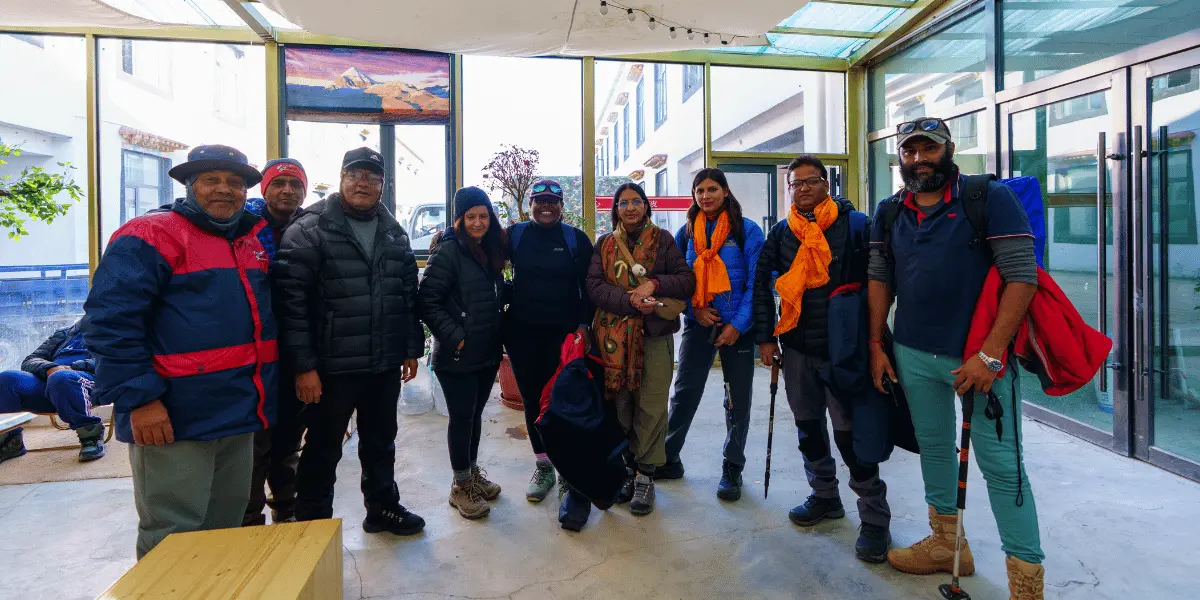
The longer the pilgrims commence their parikrama (or kora) around Mount Kailash, the longer the physical challenge tests their willpower and inner strength. Crossing the Dolma La Pass with a thin atmosphere feels heavy with each step; many push through prayers, chants, and sober determination. It is during these moments of contrast between cold and silence when many relate to having experienced powerful moments of clarity or release where those tears started flying unexpectedly, when their emotional burdens were lifted, or that connection they felt to something grander than themselves. Each stone, every prayer flag, and every fellow yatri carry the burden of this shared yet very personal journey.
At night, with a starry sky above their heads, the pilgrims' minds travel in some appraisal of life as they sit near the lake or perhaps in some far-flung mountain lodge. Away from the clamour of the world, most find themselves in a great stillness of being, as if the mountain has relieved them of all that is not needed. For many, Kailash Mansarovar Yatra is not just a pilgrimage but a spiritual awakening, a one-time interaction with the divine, and a memory etched into the very soul forever.
Also Read: Kailash Mansarovar Yatra Preparation
Kailash Mansarovar Yatra Itinerary
As you will be travelling via Nepal, you’ll spend the first few days in Kathmandu exploring the city. Depending upon the package, routes chosen, nationality and days of travel, you will leave Kathmandu and enter tibet. Out of which, the most popular route is via the Kyirong border. Provided below is the general itinerary for the Kailash Mansarovar Yatra after all the formal visa procedures in Kathmandu:

Day 01: Drive from Kathmandu to Dhunche/Syabrubesi/Timure.
This is the first day of your actual Kailash yatra after all the visa procedures are fulfilled in Kathmandu (in the case of Indian Citizens, the visa procedure will be fulfilled in Delhi, India). You will start your drive towards Dhunche (98 KM/5 hrs) or Syabrubesi (118 KM/6 hrs) or Timure (124 KM/7 hrs), where you can spend the night depending on how long it takes to get there. On the way to Trishuli Bazar, you will stop for lunch at a highway restaurant before continuing your journey. The entire ride takes you along the Trishuli River, which offers stunning scenery of the river as well as beautiful green hills of Nepal.
Day 02: Drive to Kyirong.
On this day, first you need to complete the immigration process (the departure stamp) on the Nepal side in Timure. Then you will walk towards Rasuwagadhi (Nepal-China Border), which is about 1.7 KM from Timure. You need to settle some customs formalities in Nepal before crossing the border into China, where the Tibetan guide will meet you. The guide will assist you to complete the immigration formalities. Once the Chinese immigration process is over, start driving towards Kyirong. Kyirong is 40 KM from the border and takes around one and a half hours to reach. You will stay the night at the hotel in Kyirong.
Note: Make sure you don't bring anything associated with the Dalai Lama or you won't be allowed to enter Tibet.
Day 03: Kyirong Acclimatization.
This day is added to let you adjust to the high altitude so that altitude sickness can be prevented further in your journey. You can visit the attractions and markets around Kyirong and observe their day-to-day life or walk around, as it will help you adjust to walking at high altitude. Acclimatization is the process in which an individual adjusts to a change in its environment. As it's not compulsory, you can stay in the hotel and have some rest as well.
Day 04: Drive to Saga.
After enjoying a hearty breakfast prepared by the kitchen crew, you will drive 155 kilometers from Kyirong to Saga, which will take around 3-4 hours. On the way, you will be able to encounter Ganesh Parbat and Lake Peiku Tso, then eventually cross the bridge built over the River Brahmaputra (also called Yarlung Tsangpo in Chinese) in Saga. Once you reach your hotel, make sure you get plenty of rest so that you will also be able to acclimatise to that altitude. You will stay the night at the hotel in Saga.
Day 05: Drive from Saga to Lake Mansarovar.
The sacred and stunning Lake Mansarovar (4650 m) will be your destination for this day. The distance from Saga to Mansarovar is about 450 KM and will take you around 8 to 9 hours. On the way, you will get a glimpse of Mount Kailash as well as the potent Rakshas Tal. Once you arrive at Mansarovar, you will take a rest at the guest house. You will stay the night at the guesthouse in Mansarovar.
Day 06: Drive to Darchen.
During this day, you can perform Puja/Havan at the shore of Lake Manasarovar. People usually bring materials like batti, oli, incense, etc to conduct pujas. You can also bath with the water of Mansarovar Lake by taking it out in a bucket, as taking a dip in the lake is restricted. After lunch, you will drive to Darchen, which is 35 KM from Mansarovar and takes around 1 and a half hours to drive. As you reach your stay at Darchen, you can rest your bags and relax. You can stroll around the small market in Darchen town in the late afternoon. Overnight at the guest house.
Day 07: Drive to Yama Dwara, Trek to Derapuk.
Your actual Kailash Parikrama will start on this day. First, you will drive towards Yamadwar (Tarboche), which is the starting point of the Kailash Parikrama. Passing through the gate of Yamadwar is believed to remove your evil deed from the book of judgment, and you will get a place in heaven.
Your next stop on this day will be at Derapuk, which will be about 12 KM from Yamadwar. It is one of the most exciting days of this yatra. You will walk along the beautiful rocky cliffs and waterfalls with some clouds in the clear blue sky, which makes you feel the omnipotence of Lord Shiva with tons of blessings. As you walk on, time and again, the north face of Kailash Parbat will keep appearing. Overnight at the guest house at Derapuk. If you are not doing Parikrama, then you will be waiting at Darchen till the group returns from Parikrama, with arrangements for accommodation and meals.
Day 08: Trek to Zuthulpuk.
After breakfast, you will trek to the east face of Dolma La Pass (5600 m) and then descend gradually to Zuthulpuk (4800 m). This day of the parikrama is considered the hardest, as it involved a steep high pass climb. By late afternoon, you will arrive in Zuthulpuk, the cave of miracles. The great ascetic Milerappa is supposed to have performed miracles here. Overnight at the guest house in Zuthulpuk.
Day 09: Zuthulpuk to Saga.
You will drive to Saga, your ultimate destination for the day, after walking roughly 7 km. Have your breakfast and go to the ending point near Darchen, where you will meet our vehicle and drive to Darchen, merge with the group who didn’t go for parikrama, and then drive towards Saga together. The driving distance will be around 480 KM and take about 8–9 hours. As it will be a long drive, once you reach the hotel, check in and rest. You will stay the night at the hotel in Darchen.
Day 10: Drive back to Kyirong.
Enjoy your breakfast early in the morning. This is the day that you will return to Kyirong following the same route back, which will cover around 155 KM and take about 2-3 hours. As you will reach there in the afternoon, you can take a rest or walk around the town and refresh yourself. You will stay the night at the hotel in Kyirong.
Day 11: Drive to Kathmandu.
On this day, you will return back to Kathmandu. To reach the border, you will need approximately 1 hour of driving, covering 40 KM. Then, after completing the immigration formalities on both sides, start driving towards Kathmandu. The distance is the same, 130 KM, and it takes 5-6 hours. Once you reach Kathmandu, you can check in and rest. As it is the last day here, in the evening, you can shop around the local market, Thamel.
Depending upon your packages, you might follow a different route than the one provided above. However, the itinerary will be the same once the Kailash parikrama starts.
Kailash Yatra Packages
To facilitate the diverse requirements of the pilgrims, different routes and modes of travel have been laid out, thereby presenting diverse experiences in terms of spiritual satisfaction, scenic beauty, and convenience. You can go to Kailash Mansarovar by helicopter, cross overland through Kyirong, or do the spiritually and culturally enriching route through Lhasa, so each package caters to a different taste and need for comfort. Below are the different options available for packages to help you choose the route that best fits your spiritual journey.
Kailash Mansarovar Yatra by Drive
Starting off in Kathmandu, the road journey will head toward the Rasuwagadhi border, the gateway between Nepal and Tibet through Kyirong. After immigration and customs formalities at the Nepal-Tibet border, the journey enters the TAR (Tibetan Autonomous Region) of China. Next, the journey continues by road through scenic landscapes with gradual altitude gain working better for acclimatization.
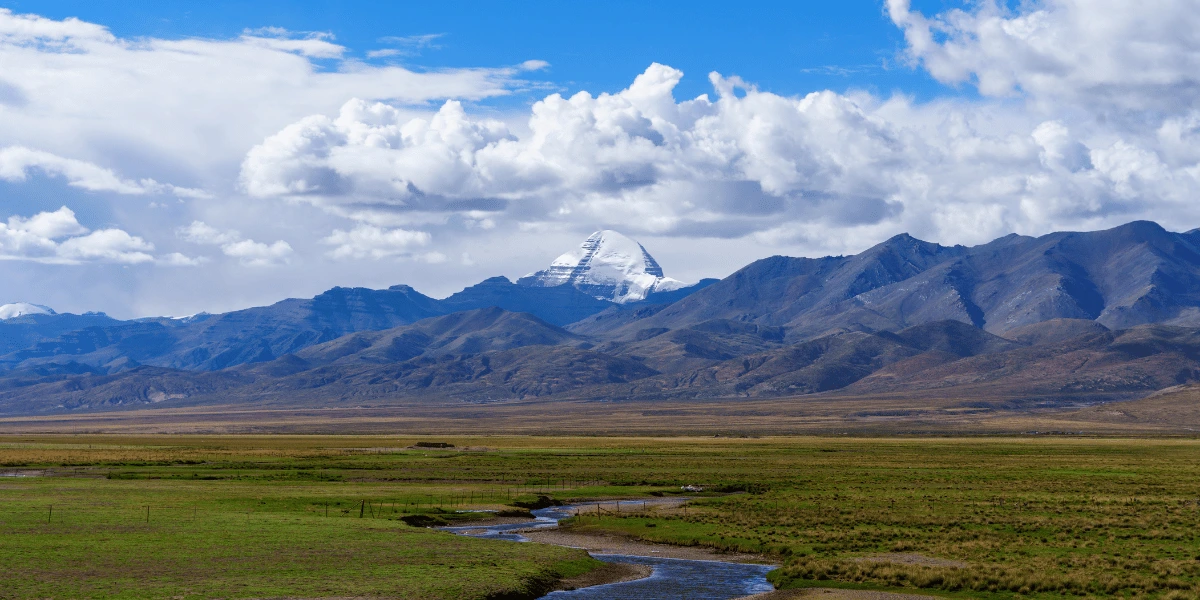
Crossing the Tibetan plateau, one comes across beautiful little towns, remote from one another, such as Saga and Zhongba, finally reaching the holy Mansarovar Lake. From Mansarovar, the drive continues toward Darchen, the base point for the holy Kailash Parikrama. This route is ideal for those who do not wish to fly or take a helicopter and enjoy watching the terrain change gradually with the altitude. And this is among the more economic moving routes followed for the Kailash Mansarovar Yatra.
The itinerary for Kailash Mansarovar Yatra by Drive is provided here:
Outline Itinerary
|
DAY 01: Kathmandu Arrival. |
|
DAY 02: Visa Application, Kathmandu Sightseeing. |
|
DAY 03: Bhaktapur Sightseeing, Nagarkot Stay. |
|
DAY 04: Chandragiri and Swayambhunath Sightseeing. |
|
DAY 05: Packing and Final Preparation. |
|
DAY 06: Drive to Dhunche or Syabrubesi or Timure. |
|
DAY 07: Drive to Kyirong. (2850 m) |
|
DAY 08: Kyirong Acclimatisation. |
|
DAY 09: Drive to Saga. (4500 m) |
|
DAY 10: Drive to Lake Mansarovar. (4600 m) |
|
DAY 11: Drive to Darchen. (4700 m) |
|
DAY 12: Drive to Yama Dwara, Trek to Deruphuk. (5050 m) |
|
DAY 13: Trek to Zuthulpuk. (4800 m) |
|
DAY 14: Zuthulphuk to Saga. |
|
DAY 15: Drive back to Kyirong. (2850 m) |
|
DAY 16: Drive to Kathmandu. |
|
DAY 17: Transfer to Airport. |
Learn More: Kailash Mansarovar Yatra by Drive via Kyirong
Kailash Mansarovar Yatra by Heli
From Kathmandu, you will take a flight to Nepalgunj and another flight from Nepalgunj connects you to the Simikot Airport. From Simikot, a helicopter flight will take you to the Hilsa-Tibet border. After the customs formalities at the Tibet border, you will drive to the Kailash Mansarovar. As it is not allowed to take a helicopter flight to the Tibetan side, it will stop there, and the onwards journey via driving will take you to the wonderful Kailash Mansarovar.
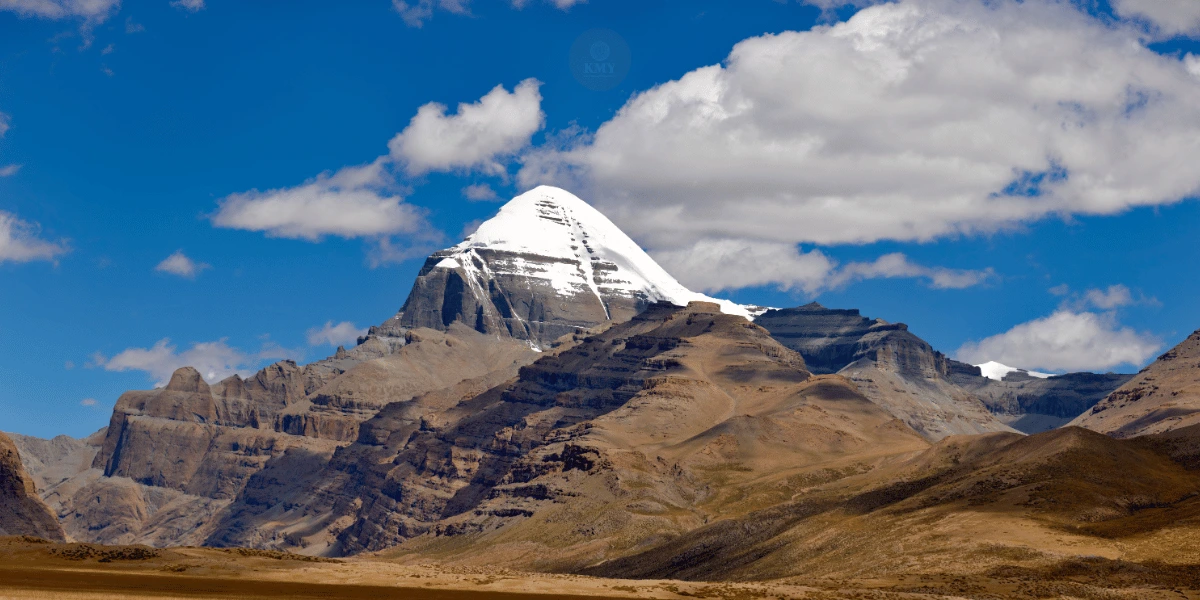
This is the shortest and most convenient route for the Kailash Mansarovar Yatra. The itinerary for the Kailash Mansarovar Yatra by Helicopter from Kathmandu is provided here.
Outline Itinerary
|
DAY 01: Kathmandu Arrival. |
|
DAY 02: Visa Application, Kathmandu Sightseeing. |
|
DAY 03: Bhaktapur Sightseeing. |
|
Day 04: Chandragiri Sightseeing. |
|
Day 05: Packing, Fly to Nepalgunj. |
|
Day 06: Fly from Nepalgunj to Simikot. (2812 m) |
|
Day 07: Simikot to Hilsa to Taklakot. (3900 m) |
|
Day 08: Acclimatisation day at Taklakot. |
|
Day 09: Drive from Taklakot to Lake Mansarovar. (4650 m) |
|
Day 10: Drive to Yama Dwara, Trek to Derapuk. (5050 m) |
|
Day 11: Trek to Zuthulpuk. (4800 m) |
|
Day 12: Zuthulpuk to Hilsa or Simikot. |
|
Day 13: Hilsa to Simikot, Fly back to Kathmandu via Nepalgunj. |
|
Day 14: Departure. |
Learn More: Kailash Mansarovar Yatra by Heli for NRIs
Kailash Mansarovar Yatra by Lhasa
From Kathmandu you will take a scenic flight to Lhasa which offers stupendous sightseeing. Upon arrival in Lhasa, there are a couple of days at leisure to explore ancient monasteries and other cultural landmarks in Lhasa proper, including the Potala Palace, the Jokhang Temple, and the Sera Monastery to acclimatize to the altitude. The journey continues by road via Tibet's majestic highlands, passing through towns such as Shigatse and Saga. This route offers a good and comfortable road, allowing for a smooth and comfortable ascent towards the sacred Lake Mansarovar. From Mansarovar, travel will be continued to Darchen, the base for the holy Kailash Parikrama.
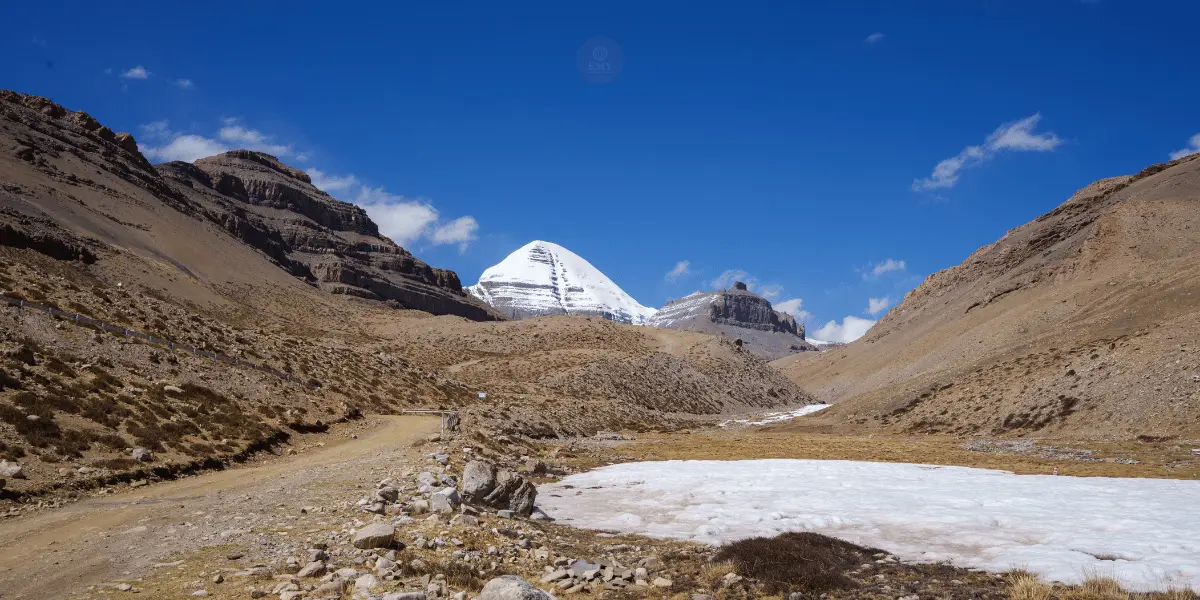
Comfortable and spiritually exhilarating, this route offers full of opportunities for acclimatization and sightseeing through historic Tibetan cities and one of the most beautiful and enriching ways to undertake the Kailash Mansarovar Yatra. The itinerary for Kailash Mansarovar Yatra by Lhasa is provided here:
Outline Itinerary
|
DAY 01: Kathmandu Arrival. |
|
DAY 02: Visa Application, Kathmandu Sightseeing. |
|
Day 03: Bhaktapur Sightseeing. |
|
DAY 04: Visa Collection, Trip Preparation. |
|
DAY 05: Fly to Lhasa. |
|
DAY 06: Lhasa Sightseeing. |
|
DAY 07: Lhasa Sightseeing. |
|
DAY 08: Drive to Shigatse, Enroute Sightseeing. |
|
DAY 09: Drive to Tingri (4348 m), Explore Everest Base Camp. |
|
DAY 10: Drive to Saga. (4500 m) |
|
DAY 11: Drive from Saga to Lake Mansarovar. (4650 m) |
|
DAY 12: Drive to Darchen. (4700 m) |
|
DAY 13: Drive to Yama Dwara, Trek to Deruphuk. (5050 m) |
|
DAY 14: Trek to Zuthulphuk, Drive to Darchen. (4650 m) |
|
DAY 15: Drive to Kyirong. |
|
DAY 16: Drive to Kathmandu. |
|
DAY 17: Departure. |
Learn More: Kailash Mansarovar Yatra by Lhasa
Conclusion
Kailash Mansarovar is undoubtedly one of the highly revered ultimate pilgrimages of Hindu followers. The holy abode of Shiva, Mount Kailash, is mysterious and naturally decorated with pristine beauty. The anecdotes in the Holy book about different religions and some scientific deviation towards Mount Kailash are believed to be the epicenter of the universe. Kailash Mansarovar is the mythical manifestation of Mount Meru as per the Hindu holy epics. Along with the Hindus, it represents the wonderful religious symbiosis among Hindus, Buddhists, Jains, and Bon. Every year, thousands of devotees take a holy yatra to Mount Kailash to complete kora (a circumambulation process of Mount Kailash) with the belief that it can liberate them from all the sins of their lifetime.
The journey strips away the distractions of modern life and offers a rare opportunity to reconnect with one's higher self. Through silent prayers, mutual suffering, or awe-inspiring views of the sacred peak, this lane leaves its spiritual undertone on the soul. It remains more than just a pilgrimage, more than a trek to a holy place-the pilgrimage is indeed a rewarding journey, which stirs one's spirit long after the final step on the earthly path is taken. The wonderful homage to Mount Kailash is itself a journey to eternal peace where the mythical enrichment of religious faith lies, and it continues to inspire pilgrims round the world.
Frequently Asked Questions (FAQs)
Here are some FAQs related to Kailash Mansarovar Yatra:
Is Kailash Mansarovar Yatra Difficult?
The Kailash Mansarovar Yatra is a physically challenging pilgrimage that combines both driving and trekking, with the trek reaching altitudes of up to 5,600 meters at Dolma La Pass. The journey involves driving and trekking through high-altitude regions, followed by a strenuous trek through rugged terrain, often in unpredictable weather conditions. Altitude, uneven paths, and changing weather prove to be a difficult combination for those who lack physical fitness or good acclimatization. To ensure a successful and safe journey, pilgrims are advised to undergo regular physical exercises for several months preceding the Yatra, keep gradually ascending to higher altitudes, and stay well-hydrated throughout. Your proper preparation will help carry you through the strenuous demands of this yatra.
Which is the best month to visit Kailash Mansarovar?
The Kailash Mansarovar yatra runs from April to October. These months are best suitable to visit Kailash Mansarovar. However, September and October are regarded as the best months to visit Kailash Mansarovar as the weather in these months is significantly clear and has good visibility in comparison to other months. In the other months of the year except for April to October, there will be thick snow covering the roads and blocking accessibility, making it severe.
What is the age limit for Kailash Mansarovar Yatra?
The age criteria for the Indian pilgrims is a minimum of 10 years and a maximum of 70 years for Indian pilgrims. However, the age criteria do not apply to Nepali and NRIs. Those with serious health conditions, such as heart disease, high blood pressure, or respiratory issues, are advised not to undertake the yatra.

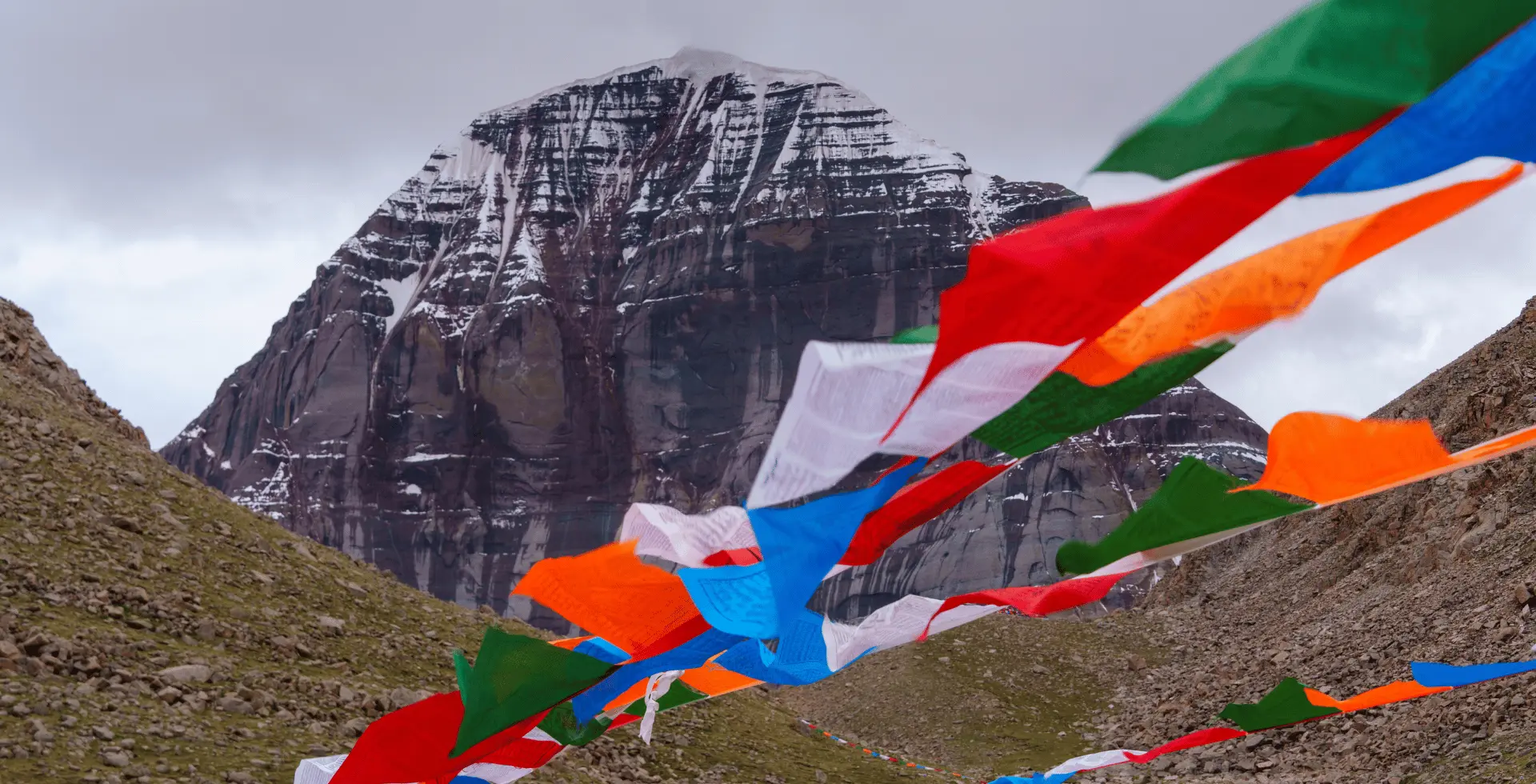
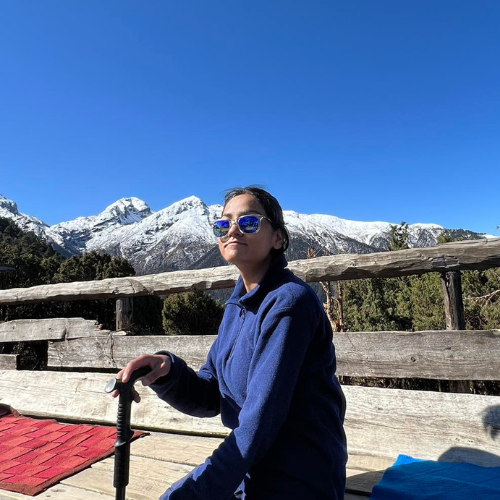 Mandira Itani
Mandira Itani